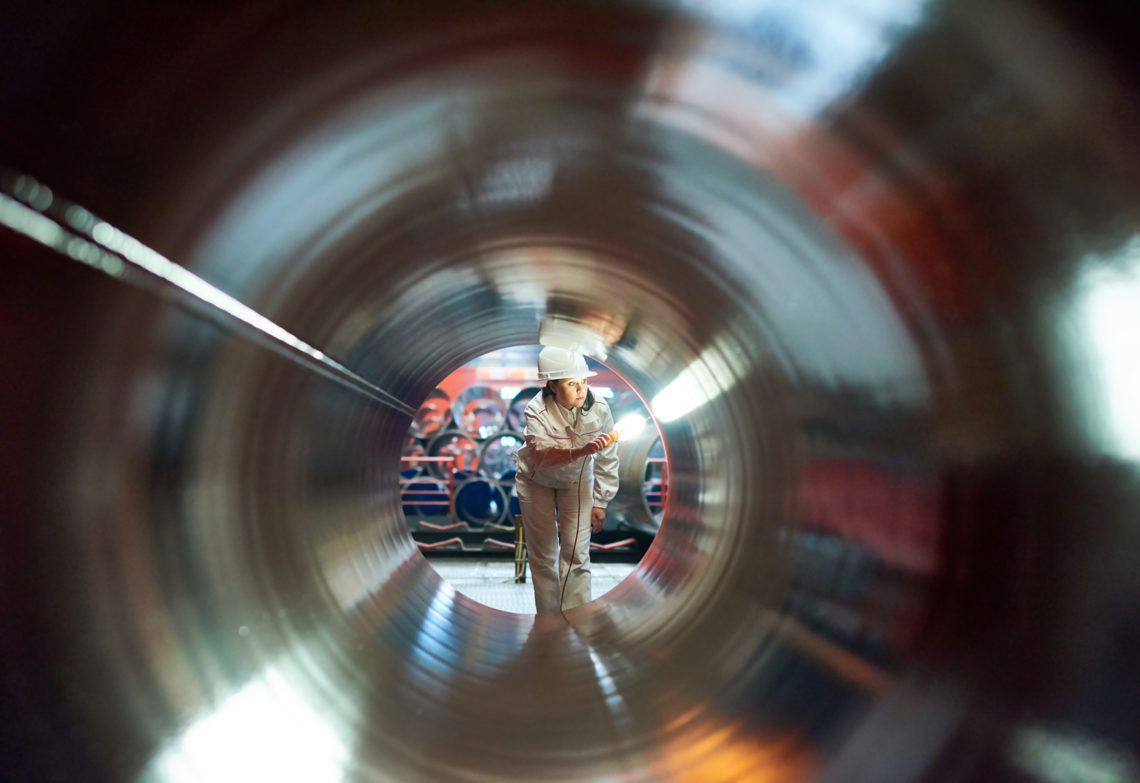A new national taskforce will focus on ways to close engineering’s gender gap.
Founded by the Deans of Engineering at the University of New South Wales (UNSW), Monash University and Australian National University (ANU), the Engineering for Australia Taskforce aims to close the gender gap in university engineering programs by addressing barriers to women’s participation.
Supported by the Australian Government’s Women in STEM Ambassador, Professor Lisa Harvey-Smith, the taskforce includes representatives from universities across Australia as well as peak professional body Engineers Australia, the Department of Treasury and Finance Victoria, the Australian Academy of Technology and Engineering, Australasian Institute of Mining and Metallurgy, Cicada Innovations and Gender Matters.
According to Harvey-Smith, the taskforce will seek to address two main concerns.
“First, engineering enrolments do not reflect the diversity of the Australian population, particularly gender diversity,” she said.
“Second, engineering has a low visibility in schools and society in general.
“Ask a Year 9 student if she wants to design a system for rare pygmy possums to safely cross a highway, and you will probably get an enthusiastic yes. Ask the same student if she wants to be a mechanical engineer, and the response may be lukewarm at best.”
The taskforce’s first action was to commission the report Fix, build, solve: Engaging girls with careers in engineering, authored by Professor Deborah Corrigan and Dr Kathleen Aikens of Monash University.
The pair’s report draws on insights from 115 international peer-reviewed research articles and explores the factors affecting girls’ participation in STEM and engineering. It also identifies key considerations in creating programs to foster girls’ participation in the field.
“After undertaking a systematic review of the existing research and literature on intervention programs to recruit girls with STEM disciplines, we propose a socio-ecological model of girls’ engagement, which recognises that an individual’s learning is impacted by both her immediate learning community (teachers, peers, family, community, learning environments and tools) as well as the socio-cultural, socio-political and socio-economic contexts in which learning takes place,” the pair wrote.
Corrigan and Aikens added that the engineering and education professions need to work together to create an ‘engineering identity’, one that highlights the profession’s benefit to society.
For example, they suggested connecting engineering skills to achieving the United Nations Sustainable Development Goals.
“Engineers make our world, and we should be making a world that we all want to live in,” said Professor Elanor Huntington, Dean of the College of Engineering and Computer Science at ANU.
“Highlighting and then removing the current barriers to participation in engineering and evaluating possible interventions to increase diversity will be invaluable to that vision.”
Building an engineering identity
To improve engagement with engineering, the report recommends the following actions:
- Create an inclusive vision for STEM and engineering to address pervasive stereotypes, encouraging excluded groups to consider engineering as a realistic career.
- Work with the education sector to create a STEM and engineering identity in schools by making engineering activities prominent, positive, and personally and socially relevant.
- Evaluate engineering intervention programs to map the landscape and build the evidence base of impact.
This work is consistent with insights from the 2019 Women in STEM Decadal Plan, with the addition of investigating challenges that are unique to the engineering profession.
At the time of the plan’s release last year, Justine Romanis, National Manager, Professional Diversity and STEM at Engineers Australia, said the engineering profession is acutely aware of issues around gender diversity.
Engineering has the lowest numbers of women compared to other STEM professions – just 13 per cent.
“There tends to be a focus on the sciences and not so much engineering, yet engineering is the worst [gender diverse] profession among the STEM professions,” Romanis said at the time.
“Engineering is the problem-solving arm. We need to ensure the ‘E’ in STEM is highly represented in all of these strategic documents.”



